Afterwhiles by James Whitcomb Riley (Ninth Thousand, Illustrated), 1890 📜🕰️🏡
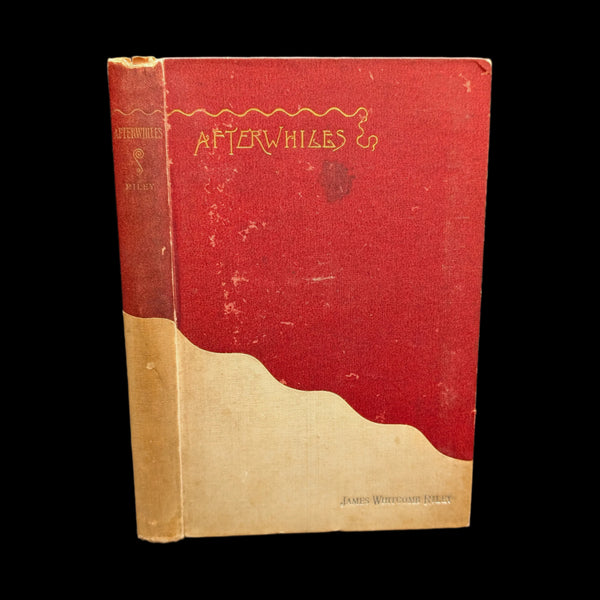
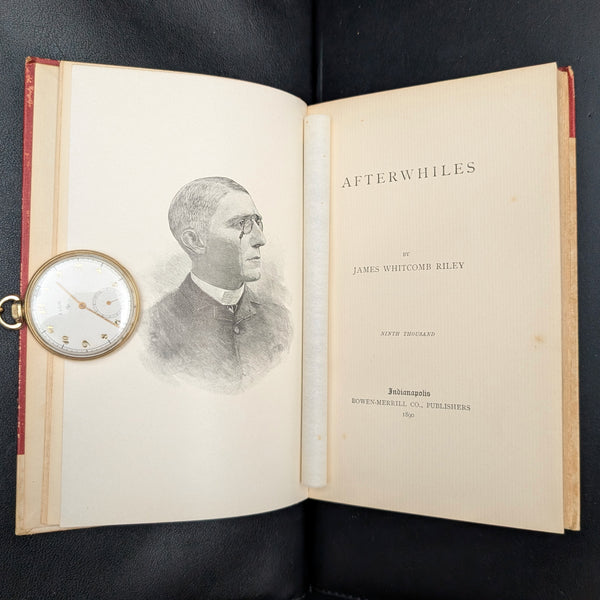
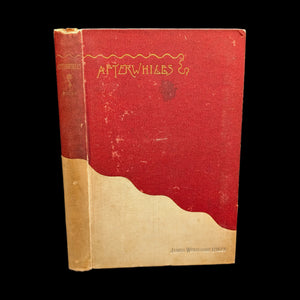
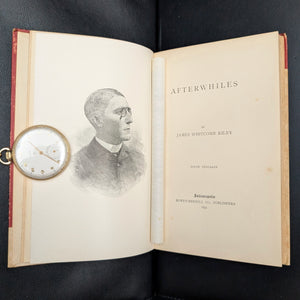
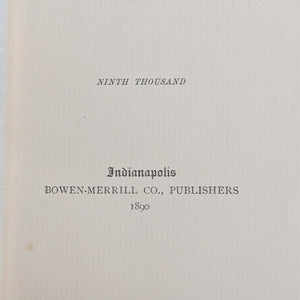
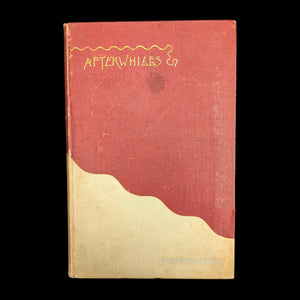
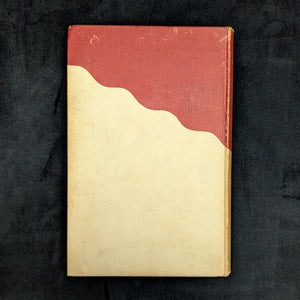
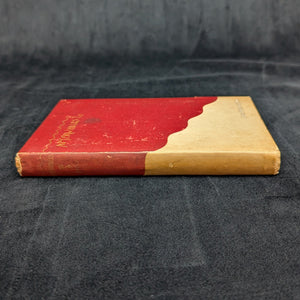
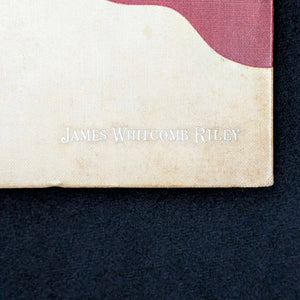
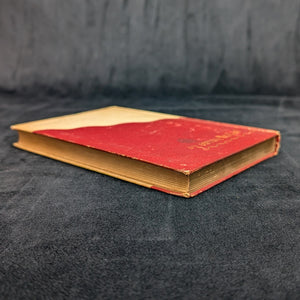

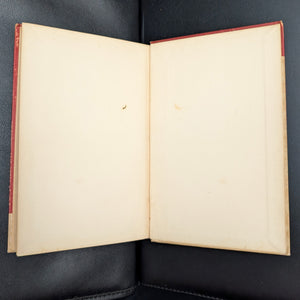
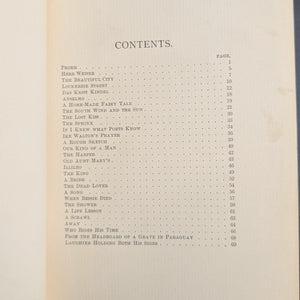
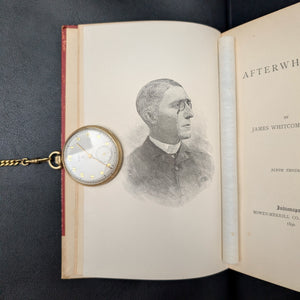
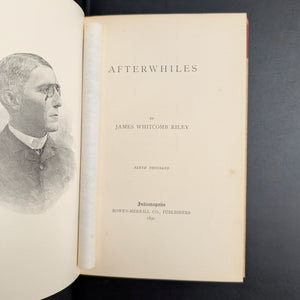
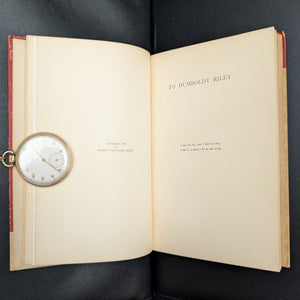
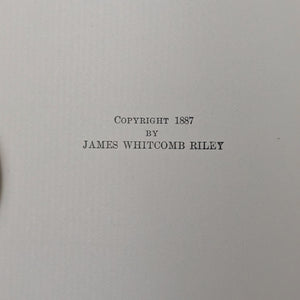
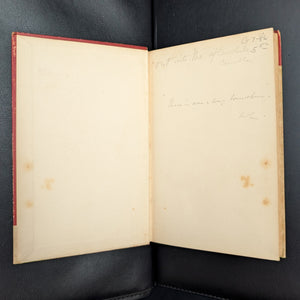
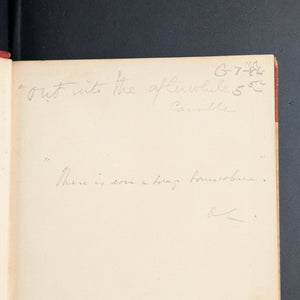
1. Introduction 📜🔍🏛️
This listing is for a vintage printing of "Afterwhiles" by the renowned "Hoosier Poet" James Whitcomb Riley.
This Ninth Thousand edition, published by Bowen-Merrill Co. in 1890, offers a collection of poems that celebrates rural Midwestern life and showcases the author's beloved sentimental style. The book features a decorative two-tone binding and an illustrated frontispiece.
2. About the Book 📖✍️✨
"Afterwhiles" is a collection of poems by James Whitcomb Riley, showcasing his style of sentimental and nostalgic depictions of rural Midwestern life. The collection features a blend of dialect poems, capturing the vernacular of Indiana speech, and standard English verse, exploring themes of childhood memories, family bonds, nature's beauty, and the simple pleasures of everyday experiences.
Riley's poetry evokes a sense of warmth and familiarity, celebrating the values and traditions of a past era. The fact that this is a "Ninth Thousand" printing indicates the collection's immense popularity and its ability to connect with readers.
3. About the Author ✍️🏛️
James Whitcomb Riley was an American poet and author, known as the "Hoosier Poet" for his celebration of Indiana and Midwestern culture in his works. His achievements include becoming one of the most popular and best-selling poets of his time, captivating audiences with his accessible and sentimental verse.
Riley's use of dialect poetry, while sometimes criticized, resonated with readers seeking a nostalgic connection to their roots. His ability to evoke a sense of warmth and simplicity in his writing earned him a dedicated following and solidified his place as a cherished figure in American popular culture.
4. Historical/Political Era Context 🌍🕰️📜
Published in 1890, this book belongs to the height of the Gilded Age, a period where sentimental and nostalgic poetry was widely read as a counterpoint to the rapid industrialization of America. The book’s commercial success, evidenced by this being the "Ninth Thousand" printing just three years after its original copyright, underscores Riley's cultural influence.
5. The Ideal Collector 💡🧐🏛️
This book is for a curator of Americana, a scholar of American poetry, or a collector who values a book for its aesthetic appeal. It is an ideal acquisition for an individual who appreciates the sentimentality of the Gilded Age and the tradition of American verse.
6. Value & Rarity 💎✨🏛️
This 1890 printing of "Afterwhiles" is a valuable and collectible item for enthusiasts of American poetry and turn-of-the-century literature. While not a First Edition, its status as a highly popular and influential work of its era makes it a significant piece of literary history.
The decorative two-tone binding is a fine example of late-19th-century book art, adding to its aesthetic appeal for collectors of decorative bindings. The unique handwritten inscriptions add a personal piece of provenance, offering a glimpse into the book’s history.
This book is 135 years old as of 2025.
7. Condition 🔎📚✨
-
This book is a used hardcover edition with a decorative red and cream cloth binding.
-
The binding shows visible wear consistent with its age, including rubbing, scuffing, and some discoloration to the boards.
-
The pages are age-toned, with some foxing and light marks, but the text remains clear and legible.
-
A frontispiece illustration of Riley is present.
-
This item came from a local estate sale and was in the previous owner's home office for many years.
8. Translation of Inscriptions/Ephemera (Conditional) ✍️📜🔤
The handwritten inscriptions on the front endpaper read: "G7-86^-5.5C," "Out with the after while Camilla," and "There is even a long after while."
9. Fun Facts & Unique Features 🤓📜🤩
-
The Ninth Thousand printing indicates the book's rapid commercial success; it was originally published in 1887.
-
Riley's books were frequently sold as popular gift items and were often handsomely bound to reflect their sentimental content.
-
The publisher, Bowen-Merrill Co., would later become The Bobbs-Merrill Company, which was a major force in American publishing.

